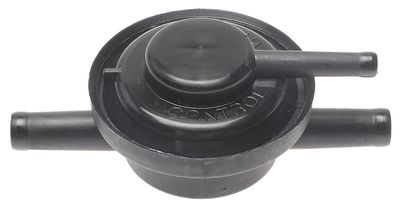Answer
Aug 16, 2024 - 07:42 AM
Identifying a faulty ACDelco 214-2294 Vapor Canister Purge Valve involves recognizing certain symptoms and performing diagnostic tests. Here’s how you can tell if your purge valve might be faulty:
1. Common Symptoms of a Faulty Purge Valve-
Check Engine Light (CEL)
- A malfunctioning purge valve can trigger the Check Engine Light. The ECU monitors the EVAP system, and if it detects a problem with the purge valve, it may set a diagnostic trouble code (DTC) and illuminate the CEL.
- Common DTCs related to a faulty purge valve include P0441 (Evaporative Emission Control System Incorrect Purge Flow), P0443 (Evaporative Emission Control System Purge Control Valve Circuit), and P0446 (Evaporative Emission Control System Vent Control Circuit).
-
Rough Idling
- If the purge valve is stuck open, it can cause a vacuum leak, leading to rough idling or even stalling, especially when the engine is at low RPMs or when coming to a stop.
-
Difficulty Starting the Engine
- A purge valve stuck in the open position can allow excess fuel vapors to enter the engine when it’s not needed, leading to a rich air-fuel mixture. This can cause difficulty starting the engine, particularly after refueling.
-
Poor Engine Performance
- A faulty purge valve can lead to inconsistent engine performance, such as hesitation or surging during acceleration. This occurs because the engine is not receiving the correct air-fuel mixture due to improper vapor flow.
-
Fuel Odor
- If the purge valve is stuck closed, it prevents fuel vapors from being sent to the engine for combustion, which can cause a buildup of vapors in the EVAP system. This can lead to a noticeable fuel odor, especially around the vehicle.
-
Electrical Test
- Check for Continuity: Disconnect the electrical connector from the purge valve and use a multimeter to check the resistance across the terminals. The resistance should fall within the range specified in your vehicle’s service manual (typically between 20-30 ohms). If the resistance is out of range or shows an open circuit, the valve may be faulty.
- Test the Power Supply: With the vehicle on, check if the valve is receiving the proper voltage from the ECU. If the valve is not receiving power, the issue might be electrical rather than the valve itself.
-
Vacuum Test
- Apply Vacuum: Use a hand-held vacuum pump to apply vacuum to the purge valve. With the valve de-energized (not receiving a signal from the ECU), it should hold the vacuum. If it does not hold vacuum, the valve is likely faulty.
- Activate the Valve: Energize the valve by providing it with power (either by starting the vehicle or using a 12V power source). The valve should open, releasing the vacuum. If it doesn’t, the valve may be stuck or otherwise malfunctioning.
-
Functional Test (On-Vehicle)
- Listen for Operation: With the engine running, listen for a clicking sound from the purge valve, indicating it is opening and closing as it should. No clicking or continuous clicking may indicate a problem.
- Smoke Test: If available, a smoke test can be performed on the EVAP system to check for leaks or blockages, which can indicate a faulty purge valve.
- If you’re unsure about the condition of the purge valve after performing these checks, or if the symptoms persist, it’s advisable to consult with a professional mechanic. They can perform more advanced diagnostics to determine the exact cause of the problem.
To determine if your ACDelco 214-2294 Vapor Canister Purge Valve is faulty, look for symptoms like a Check Engine Light, rough idling, poor engine performance, difficulty starting, and fuel odor. You can also perform electrical resistance checks, vacuum tests, and functional tests to verify the valve’s operation. If the valve fails any of these tests or you experience the listed symptoms, it may be necessary to replace the purge valve.





Add New Comment